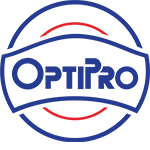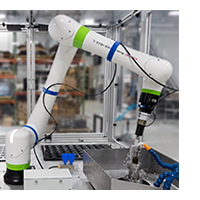Mastercam 2024
Mastercam 2024 is here! OptiPro’s Mastercam team is ready to help you make the move to Mastercam 2024. Mastercam Maintenance customers can log in to my.mastercam.com to download now. For all other Mastercam users, if you want to update to the latest version, please contact our office for details, (585) 265 – 0160 or mastercam@optipro.com.
Below are ten features you need to know:
1. B-Axis Contour Enhancements
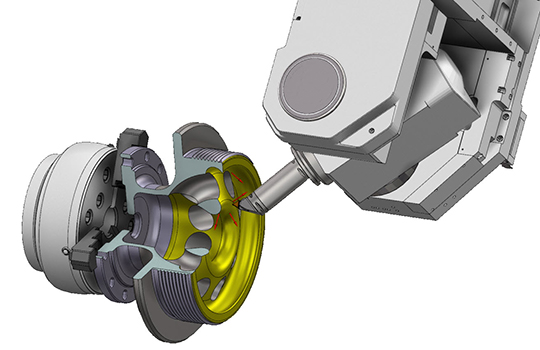 Three major enhancements have been added to the B-Axis Contour Turning operation—the ability to manually edit tool axis vectors, manually edit usable insert area, and adjust stock function. These enhancements allow for more in-process control over how the tool contacts the part, and furthers the optimization of tool life and surface finish, while also streamlining your workflow.
Three major enhancements have been added to the B-Axis Contour Turning operation—the ability to manually edit tool axis vectors, manually edit usable insert area, and adjust stock function. These enhancements allow for more in-process control over how the tool contacts the part, and furthers the optimization of tool life and surface finish, while also streamlining your workflow.
2. Turret Mounted Angled Milling Heads
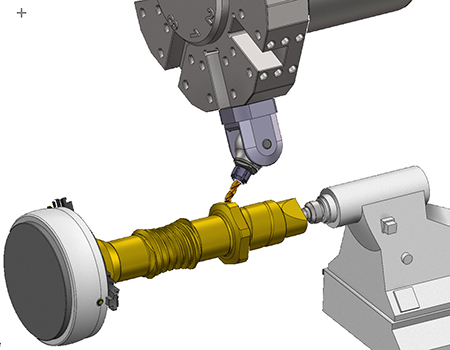
You can now use turret-mounted angled milling heads in Mill-Turn operations, allowing you to create toolpaths on angled planes using turret-mounted tools. Enjoy enhanced productivity and ease of use for both milling and turning operations within the Mill-Turn environment.
3. Process Hole Improvements
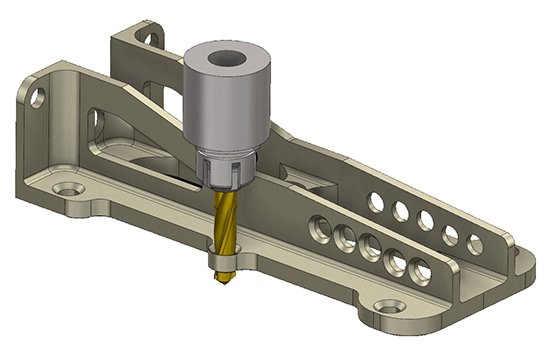 The process hole toolpath applies previously defined processes to a part’s solid hole features, which consists of one or more holemaking operations’ built-in functions library. The ability to import applicable processes into the working part file will save time and money while maintaining consistency with your processes.
The process hole toolpath applies previously defined processes to a part’s solid hole features, which consists of one or more holemaking operations’ built-in functions library. The ability to import applicable processes into the working part file will save time and money while maintaining consistency with your processes.
4. Holemaking Enhancements
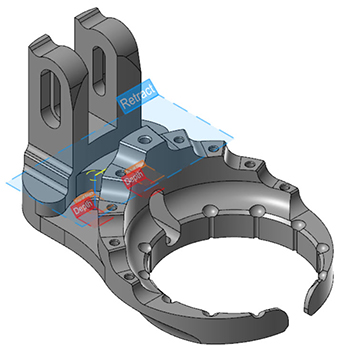
A “display graphical elements” button has been added to the holemaking and multiaxis toolpath dialog boxes, allowing users to show or hide graphical elements, such as selected geometry colors and graphical planes, depending on the toolpath type. This allows for more customized control on a hole-by-hole basis or across the entire holemaking toolpath, giving you a quick visual aid for toolpath creation and troubleshooting.
5. Dynamic Motion – Maximize Engagement
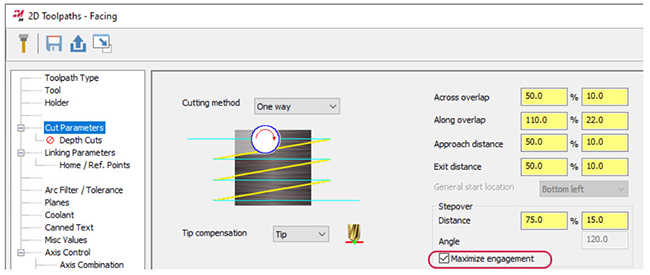
The Dynamic Mill, Face, and Dynamic OptiRough toolpaths now include a new Maximize engagement option, which produces more nominal chips, minimizes the number of small chips, and helps prevent problematic stand-alone material slivers. Additionally, Mastercam moves towards the entered Stepover as quickly as possible, helping to extend tool life, reduce vibration, optimize heat generation, promote healthy chip evacuation, and reduce overall machine wear.
6. Waterline Enhancements
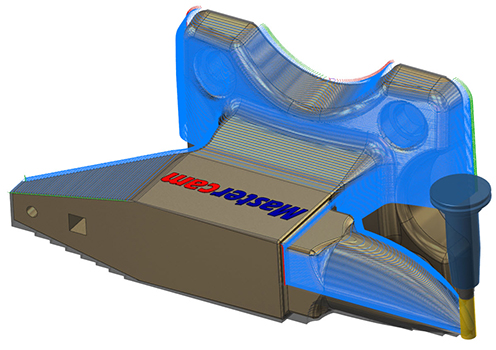
Waterline toolpaths are now aware of undercut stock conditions, resulting in improvement to the toolpath motion and less air cutting.
7. Save/Load Toolpath Defaults List
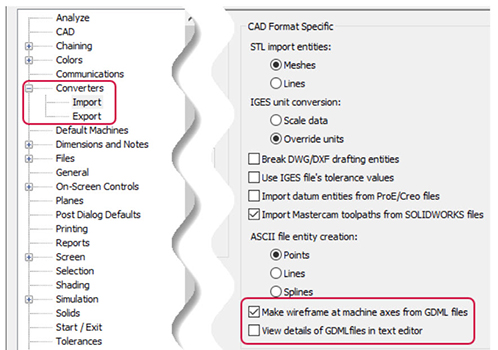 This enhancement to saving and loading defaults allows you to specify individual files and operations to load from/save to. You can quickly switch between default sets for different toolpath goals or transfer operational data from file to file. These enhancements deliver time savings, an enhanced user experience, and drastically improved functionality, flexibility, and overall usefulness.
This enhancement to saving and loading defaults allows you to specify individual files and operations to load from/save to. You can quickly switch between default sets for different toolpath goals or transfer operational data from file to file. These enhancements deliver time savings, an enhanced user experience, and drastically improved functionality, flexibility, and overall usefulness.
8. Gview Cube – New On-Screen Gnomon
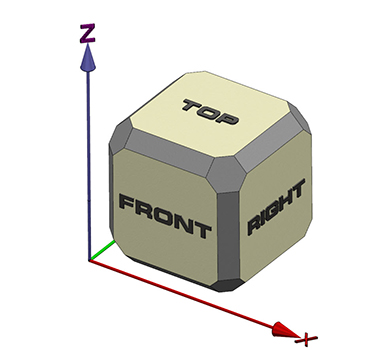
Mastercam’s traditional on-screen gnomon has been augmented with the new Gview cube, which is a more graphical way to show plane orientation. With many interactive features, the optional Gview cube is relative to the WCS by default and features many options that allow you to control the cube and on-screen representation of the part.
9. Machine Group Setup Stock Updates
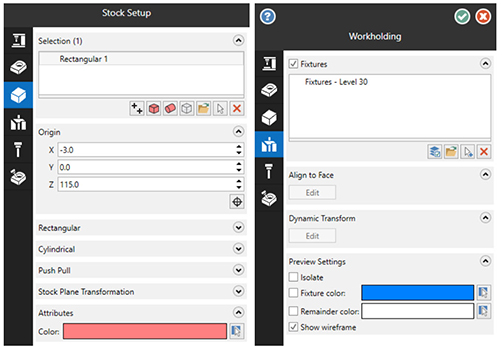
Three new easier, more intuitive selection methods have been added, including Add from two corners, Add rectangular stock, and Add cylindrical stock. Stock definition is the first thing a user must do, and these new stock definition methods simplify and speed up the process while creating a better user experience.
10. Solid Hole Enhancements
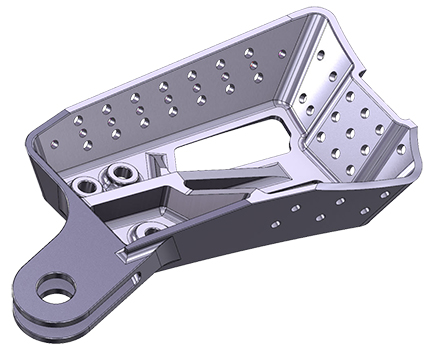 New solid hole enhancements include matching edge treatments for top and bottom edges, changing the direction of existing through holes, and creating new solid operations from a single existing hole operation. These represent more flexibility, fewer clicks, and time savings when creating geometry for holemaking operations.
New solid hole enhancements include matching edge treatments for top and bottom edges, changing the direction of existing through holes, and creating new solid operations from a single existing hole operation. These represent more flexibility, fewer clicks, and time savings when creating geometry for holemaking operations.
